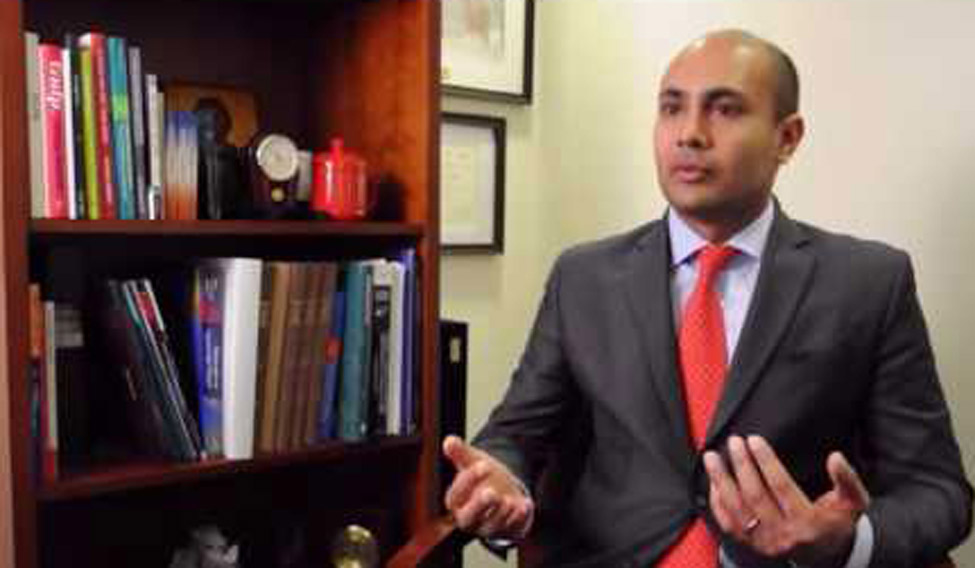Oral cavity cancer is one of the leading type of cancers among men in India, and accounts for over 30 per cent of all cancers reported in the country. This is in sharp contrast to the condition in the US, where oral cavity cancer represents only about 3 per cent of malignancies. Major risk factors for oral cancer in India include smoking, chewing tobacco and betelnut quid (paan) which consists of betel leaf, areca nut, and slaked lime, says Dr. Nishant Agrawal, chief of otolaryngology-head and neck surgery and director of head and neck surgical oncology, University of Chicago.
Agrawal is conducting research into detecting tumor DNA in the saliva and plasma of patients with head and neck cancer, with the goal of developing new screening, early detection and treatment monitoring methods. Agrawal, who was in New Delhi for a conference at the University of Chicago Centre in New Delhi spoke to THE WEEK on a range of issues around oral cancer.
Excerpts from an interview:
Could you explain the link between genetics and cancer?
We know is that cancer is a genetic disease―a disease that is caused by errors or mutations in the DNA of cells. Mutations in two kinds of genes are responsible for cancer―tumour suppressor genes (protects the cells from mutating to become cancer) and the oncogene (genetic material that carries the ability to cause cancer). Cancers of the head and neck are predominantly caused by mutations in tumour suppressor genes.
The mutations are influenced by heredity, errors that occur when normal cells divide, and the environment. While genetic mutations caused by heredity and cell divisions are not in our control, we can change bad lifestyle habits and environmental influences. In the case of head and neck cancer, these habits include smoking, chewing tobacco, and betel quid, alcohol, and human papilloma virus (HPV). In a country such as India, the incidence of oral cancer is so high because of these prevalent habits.
What about new cures to treat cancer and the challenges therein?
Since the “war on cancer” began with the signing of the National Cancer Act of 1971 in the US, there has been progress in reducing cancer mortality. There was a time when we thought there is a magic bullet that will cure all cancer. However, now we know that cancers are heterogeneous and are continuously evolving. While there has been substantial progress in reducing cancer mortality rates for some cancers, other cancers are still not curable. For head and neck cancer, we recently have two novel therapies, mainly targeted therapy and immunotherapy.
We have the drug cetuximab to treat head and neck cancer but its efficacy is often limited. For recurrent and metastatic disease, we also have immunotherapy. Again, the challenges are heterogeneity and an ever-changing cancer. There is great tumor heterogeneity within a patient, and even among patients who have the same kind of cancer. The challenge with targeted therapy is the emergence of drug-resistance.
The buzzword in cancer treatment right now is immunotherapy―stimulating the body's own immune system to stop the spread of cancer cells. But even with immunotherapy, the response in head and neck cancers has been low―about 20 per cent. Gene editing techniques such as CRISPR have potential, but it is still too early to say anything.
In India, where the rate of oral cancer is very high (after lung cancer, cancer of the mouth is the most prevalent cancer among males). Where does the solution lie?
A majority of head and neck cancers can be prevented; in fact, prevention is the most cost efficient and the easiest way to tackle oral cancer. Focus should be on education and raising awareness around the causes of oral cancer. Furthermore, screening and early detection can also help decrease the morbidity and mortality from oral cancer.
Most patients with oral cancer present at an advanced stage, and in such cases, the survival rate of the patients is low. In high-risk groups, any symptoms should not be ignored. These symptoms include persistent ear pain, any bleeding that doesn't stop, pain in swallowing, voice changes, change in breathing, sore throat, and unintentional weight loss, among others. Treatment outcomes are much better when oral cancers are detected at an early stage.



